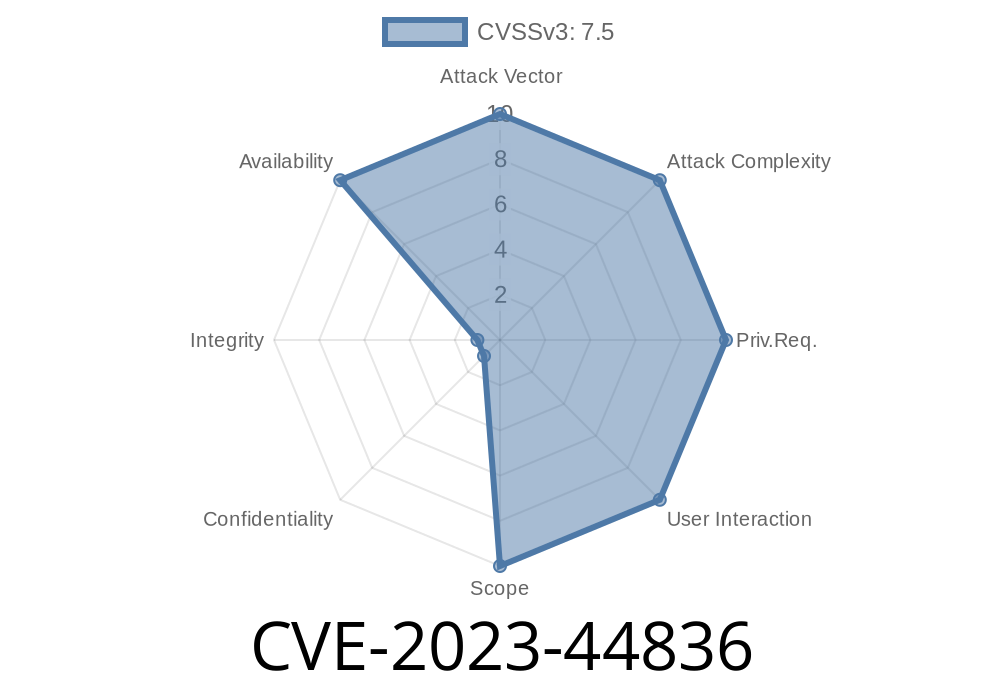An alarming security vulnerability has been detected in the D-Link DIR-823G A1V1..2B05 wireless router, tagged as CVE-2023-44836. Researchers identified a buffer overflow vulnerability arising from the SSID parameter in the SetWLanRadioSettings function. This exposes users to malicious exploitation resulting in a Denial of Service (DoS) attack.
In this post, we will dive deep into the details of this vulnerability, analyzing its code snippet, highlighting essential resources, and shedding light on the potential exploit methods employed by attackers.
To better understand the issue, let's examine this code snippet
int SetWLanRadioSettings(const char *input_ssid)
{
char ssid[128];
if (strlen(input_ssid) < 128) {
strcpy(ssid, input_ssid);
} else {
return -1;
}
// ... Further processing of ssid
}
Here, the function "SetWLanRadioSettings" accepts an input_ssid string and copies it into the ssid buffer. However, the code fails to handle an input_ssid string with exactly 128 characters. As a result, strcpy() would lead to a buffer overflow, since it doesn't account for the NULL-terminating character.
Original References
Below, we have listed relevant resources that provide additional context and reputable information about the detected vulnerability:
1. NVD - Detail - CVE-2023-44836: The National Vulnerability Database's official page for the vulnerability (CVE-2023-44836), maintained by the United States government.
2. D-Link DIR-823G A1V1..2B05 Buffer Overflow: An exploit-db webpage detailing the technicalities of the vulnerability and its exploit.
Exploit Details
To exploit the buffer overflow vulnerability, an attacker needs to craft an input where the length of the SSID parameter causes a buffer overflow in the SetWLanRadioSettings function. This can be accomplished by either inputting a malicious payload of exactly 128 characters or leveraging a network sniffer to observe SSID values and execute a well-crafted input to cause the DoS attack.
Once the attacker has successfully exploited the vulnerability and triggered a buffer overflow, the consequence would be the router crashing and denying service to legitimate users, causing significant disruption and inconvenience.
Mitigation Measures
To prevent this vulnerability from being exploited, it is essential for users of the affected D-Link DIR-823G A1V1..2B05 router to implement the following measures:
1. Update the firmware: Regularly check for new firmware updates and apply them to your wireless router to keep the device up-to-date and secure against emerging threats.
2. Change the default SSID: Modify the default SSID name to a more secure one as a precautionary measure against potential attackers.
3. Use strong authentication and encryption: Ensure the router's security settings utilize WPA3 or, at the very least, WPA2 encryption and make use of a robust passphrase.
4. Isolate wireless devices: To minimize the risk of remote exploitation, create separate network segments for different types of devices.
Conclusion
Buffer overflow vulnerabilities such as CVE-2023-44836 within D-Link DIR-823G A1V1..2B05 expose users to potential attacks with destructive consequences. Therefore, prompt and efficient actions must be taken to mitigate the risks. By updating firmware versions, enhancing default settings, and adopting more robust authentication measures, users can significantly minimize their susceptibility to buffer overflow exploits.
Timeline
Published on: 10/05/2023 16:15:11 UTC
Last modified on: 10/06/2023 15:20:09 UTC
